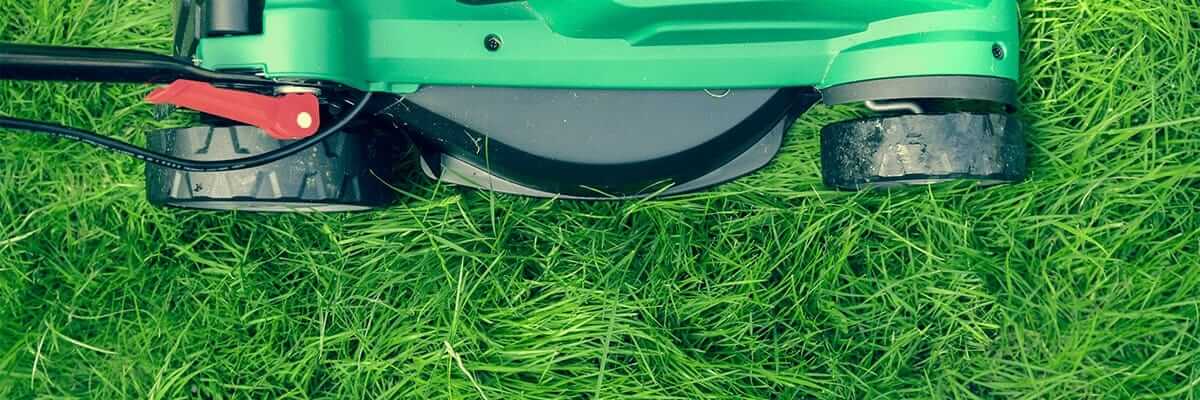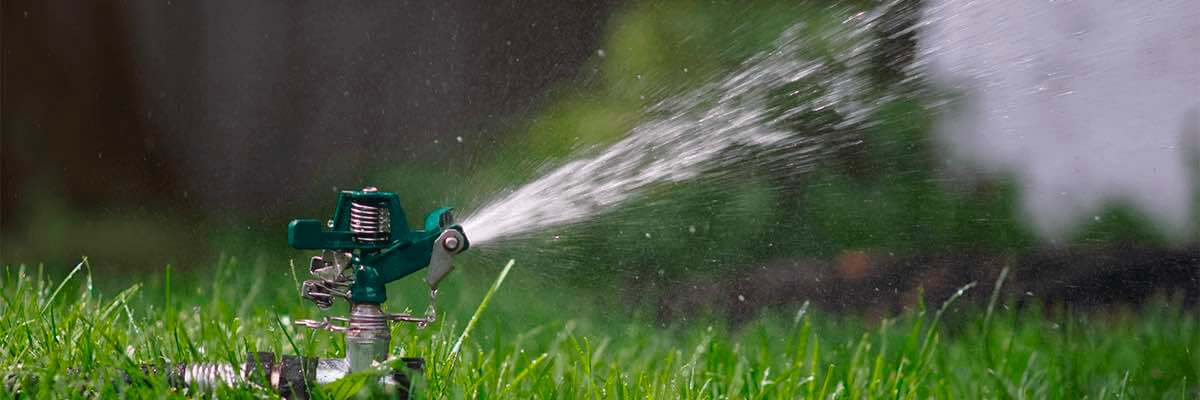Pricing lawn care services: Lawn mowing pricing formula

In this guide, you’ll learn how to price lawn care services in way that attracts new customers and drives revenue.
Lawn care is an essential part of home maintenance that can’t be neglected. That being said, many people don’t enjoy or are incapable of mowing their lawns.
Running a lawn care business allows you to provide lawn mowing services to those unable to take care of their lawns or who want a professional to ensure their yards are always in the best shape.
In this guide, you’ll learn how to price lawn care services in way that attracts new customers and drives revenue. Keep reading for a lawn mowing pricing formula that’s a sure-fire way to price your jobs right every time. Here’s a preview of what you’ll learn:
Ways to charge lawn mowing services
There are several ways you can go about pricing lawn and landscaping services. The two most popular ways to charge for lawn mowing jobs are calculating pricing based on the size of the lawn to be mowed and by the time it takes to mow.
Let’s take a closer look at both of these pricing options.
By size
Pricing by square footage requires you to take accurate measurements of the lot, which many lawn mowing professionals find to be an inefficient pricing method.
The one exception is if you’re dealing with a larger property that spans several acres. Charging a flat fee per acreage may be more beneficial and save you time when creating an estimate. Adjusting pricing based on the frequency of mowing needed is a common consideration as well.
Otherwise, charging per hour will give you the best estimate and is the easiest method to add to your lawn mowing pricing formula.
Per hour
Many lawn care professionals prefer to price by the hour instead of lot size, as it gives a more accurate estimate of costs.
Depending on where you’re working, you can charge anywhere from $25 to $60 an hour for lawn mowing. As well as accounting for the time needed to mow the lawn, be sure to account for your travel time and equipment prep work when charging per hour.
Of course, pricing is more complicated than figuring out an hourly charge. So, let’s take a more in-depth look at how to price lawn mowing services.
How to find lawns to mow
Whether you’re just starting or have been doing this for years, the bulk of the marketing efforts for a lawn care professional should focus on finding lawns to mow.
But how do you find more lawns to mow? Here are some great ways to do so:
- Promote your business through word of mouth.
- Implement a referral program where current customers can get discounts by referring friends or family.
- Create print materials like business cards, brochures, and flyers to distribute in your area.
- Make a website for your business to showcase your work and list important information, like prices and locations.
How to price lawn mowing services

Coming up with competitive prices requires a lot of research and a thorough understanding of both your business and target customers.
However, once you find the prices that work for you, you’ll:
- Find more opportunities.
- Drive business growth.
- Retain more customers.
Follow the steps below to price your lawn mowing services efficiently and accurately every time!
Step 1: Calculate your hourly labor rate
Labor costs are most businesses ’ biggest expense. So, it’s smart to start here to figure out how much to charge for lawn mowing.
You can find your hourly labor rate per worker and per job by considering these factors:
- The average rate for lawn care services in your area.
- How much you pay your employees per hour.
- Your desired profit margin.
It’s important to note that pricing by the hour does not mean that you have to communicate your hourly charge to your customer.
You can plug your hourly rates into your lawn mowing pricing formula to help you figure out what prices make sense for your business and present the total to your customer.
Step 2: Check out the lawn in question
You should always check out your customer’s lawn before giving them a quote, regardless of whether you charge by the hour or by size.
Your customer can say they just want their lawn mowed, but once you arrive, you may notice that some extra care is required before you can mow. As a result, additional services need to be included in the estimate you offer them. Offering additional services, such as trimming or edging, for an additional fee is necessary in many cases.
For example, you might discover that what your customer may think is overgrown grass is actually weeds, requiring weed control on top of regular mowing.
You’ll want to inspect the lawn so you can assess its condition and determine what type of treatment it needs. This ensures that you deliver an accurate estimate from the beginning and avoid surprising your customer with extra charges later.
Step 3: Decide how many employees
You know that your labor rate will be the largest factor in determining your lawn care prices, so your focus should also be on what influences your labor rate. In this case, that would be your employees.
And since you wouldn’t be able to grow as quickly without your employees, pricing their labor takes skill.
When you assess a job for a potential client, determine how many workers it will take to complete the job in a reasonable amount of time.
To get your total labor rate, add each employee’s hourly rate to get your total hourly labor rate. Then multiply that by the number of hours the job will take to complete.
For example, let’s say a job takes two hours for two of your employees to complete, and you pay each of them $40 an hour.
$40 x 2 employees = $80 hourly rate
$80 x 2 hours = $160 total price of the job
Remember, $160 does not include factors such as special services, a markup for profit, or overhead as labor costs are only one part of the lawn mowing pricing formula needed to create estimates.
Step 4: Consider special services and materials

Lawn care isn’t just mowing grass. As you know, a lot goes into maintaining a lawn, and therefore, a variety of services that your business could offer.
Additional lawn services include:
- Mulch and fertilizer application.
- Tree trimming.
- Weed and insect control.
- Aeration.
- Winterization.
You should price each of these additional services separately instead of putting them together in one lump sum. This ensures that you account for all elements of the job.
Not only do these services require different types of labor, but they also require different materials that affect the total price of the job.
Discuss these special services with your customer beforehand to ensure that you’re both on the same page.
Step 5: Don’t forget overhead and equipment
Once you’ve calculated the cost of labor, you will factor in overhead and other costs.
Your lawn care company’s overhead costs may include:
- Administrative staff.
- Office space.
- Vehicle maintenance.
- Other bills (phone, internet, etc.)
- Equipment.
After labor, your business’s second-largest expense is equipment. Just like labor, equipment costs money, so you have to make sure that you’re always in a position to maintain or replace it if necessary.
As a result, factoring in the cost of equipment and maintenance as part of your overhead costs is crucial. You should markup anywhere from 11 – 50% to cover your total overhead costs.
From there, add a markup for profit. Your markup should be based on how much profit you are looking to make from every job and is determined by your other expenses.
Before arriving at a final price, double-check that you’ve included every element of the job in your calculation and have priced any special factors correctly. To give your customer an idea of your prices beforehand, you can create a lawn care price sheet.
Lawn care price sheet
A lawn care price sheet lets your customer know your prices in advance and gives you a baseline to help develop accurate estimates for your customers.
To create your lawn care price sheet, you should use a lawn mowing pricing formula to determine your prices.
Here’s what your lawn mowing pricing formula will look like:
Hourly labor rate (# of hours) + overhead + profits + taxes = Total job price
By using this formula, you’ll quickly determine the price of all types of jobs to deliver the best service possible.
Why do it the hard way? Use our free invoice generator in Method to skip the calculators and manual headaches. Get paid faster and look good doing it.
Lawn care price based on size
Even though you shouldn’t price based on the square footage of the lot, knowing the size will still help you estimate the total cost of a job.
The price of lawn care is greatly affected by the size of the lawn, which will be an element you use to determine the labor that goes into it.
Now that you know what goes into the costs of lawn care services and your different pricing options let’s nail down how much to charge for your services.
Commercial lawn mowing rates
Commercial lawn mowing rates tend to vary, but the average job cost is between $50 and $250. Generally, there are three lawn mowing pricing models you can choose from when setting your rates:
- Charging by the hour: This is the most common pricing model where you charge customers an hourly rate from start to finish.
- Charging by the square foot: Some lawn care companies charge customers based on how much land they mow.
Charging a flat rate: A flat rate is where you charge a set amount of money for each lawn mowing job. Due to its consistency, this pricing model is best used for recurring customers.
How much to charge for lawn mowing
Now for the most difficult part: figuring out how much to charge for lawn mowing services.
You shouldn’t strive to offer the cheapest lawn mowing service in your area, but you also don’t want to be the priciest in your area either.
Mowing is one of the most common lawn care services you can offer, but even the price of a simple lawn mowing job isn’t always that straightforward.
The average cost of lawn mowing is $61. However, there are many factors to consider that may make the price of a job more or less expensive.
What influences lawn mowing costs?
There are several lawn mowing cost factors to consider when pricing your jobs.
For example, does your lawn mowing service only include lawn mowing, or will you offer other services such as leaf removal and clean-up as part of a package?
Other factors to consider include:
- Size of the yard.
- Services required.
- Number of employees needed.
- Regional climate.
- Location of the job site.
- Local weather conditions.
It’s important to note that location plays an important role in determining the cost of lawn care, so adjusting pricing based on the location of the property is vital.
Setting prices based on the type of property (residential vs commercial)is standard practice. Location also plays a factor to encourage pricing based on the complexity of the job, such as sloped terrain or obstacles. The same goes for warmer climates where grass may grow quicker and colder climates that require winterization.
When to adjust your lawn care service pricing

You should always adjust your pricing as the demand and the average lawn care prices in your area change, and your business needs evolve.
Here are some examples of when you should adjust your lawn care pricing:
- If you want to target specific neighborhoods with different demographics.
- If you are offering seasonal pricing options or package deals as part of your marketing strategy.
- If you are offering discounts for larger jobs or repeat customers
- The seasons are changing, and you are transitioning to winterization or snow removal jobs.
From time to time, step back and take a look at how your business is performing. Then ask yourself these questions:
- Are you making as much profit as you were hoping to make?
- Have your expenses increased?
- Is your customer base growing?
If you keep these questions at the back of your mind, you’ll prevent your business from falling behind. Make sure you make these updates to your lawn mowing pricing formula as well!
Lawn mowing pricing formula FAQ
Here are some additional questions you may have on lawn care services:
- How much should I charge for mowing lawns?
- What are the average acreage mowing prices?
- How much to charge for mowing 1 acre.
- How much does professional lawn care cost?
- How to quote a lawn mowing job.
- How to price yard work.
How much should I charge for mowing lawns?
The average price of lawn mowing services is $61 per visit. However, several factors influence this price, including:
- Size of the lot.
- Condition of the lawn.
- Additional services required.
The best way to get an accurate estimate is to visit your customer to check out what needs to be done and discuss your services with them.
What are the average acreage mowing prices?
For customers with large properties, charging per acre may be the best option for a quick and accurate estimate.
Although prices differ, you should expect to charge around $175 per acre for mowing alone. However, that bill can quickly add up if additional landscaping is involved.
Large properties that only require mowing don’t require as much prep time or edging, so it’s possible to charge less than the average per acre for large yards and still make a profit.
How much to charge for mowing 1 acre
Most American lawn care companies charge $150-200 to mow one acre of grass. However, this number may vary depending on your pricing model and field conditions.
If you charge by the hour and the lawn has rough or hilly terrain, the job may take more time than mowing a relatively flat lawn, increasing your profits.
Conversely, charging a flat per square rate will cause you to lose some money on labor because mowing hilly lawns requires extra time and effort.
Ultimately, there’s no hard and fast rule on how much you should charge to mow one acre of grass. Survey the terrain and set your price based on how much effort and resources you’ll expend doing the job.
How much does professional lawn care cost?
Professional lawn care costs anywhere between $48 and $211, depending on the customer’s yard. If the customer only wants basic lawn mowing services, then they can expect to pay $25-150 per week.
The numbers cited above are national figures, so professional lawn care fees in your area may be different. The numbers can also differ if you take per hour and per square feet rates into account.
Many factors play into the pricing of lawn care services, but the most prominent ones are:
- Lawn size: Naturally, larger lawns lead to higher costs because there’s more work to be done. However, especially large lawns may cost less per square foot because it’s not as detail-oriented.
- Labor requirement: Especially large lawns may need more lawn care professionals. The more lawn care professionals are assigned to a job, the higher the cost.
- Lawn layout: A flat, empty lawn is easier to take care of than hilly lawns with fences and trees. More complicated lawns will lead to more labor-intensive jobs and higher costs.
- Travel expenses: Generally, travel costs are included in your hourly quote. However, clients who live especially far away may be charged a travel surcharge to cover excess fuel costs.
- Equipment costs: Advanced equipment helps lawn professionals get the job done more effectively but usually at an increased cost due to more expensive upkeep.
How to quote a lawn mowing job
Quoting a lawn mowing job requires you to strike a balance between earning profits and giving a fair price to the client.
When quoting a lawn mowing job, you can use one of these three approaches:
- Time-based rate: Most new lawn care professionals charge by the hour because it’s a straightforward and transparent way to price jobs. With this pricing method, you can also factor in equipment setup and cleanup in your hourly rates, earning you an extra bit of cash before and after work.
- Square footage rate: Pricing your job by how many square feet you’re mowing is a fair pricing method for businesses. However, this approach doesn’t factor in whether a client’s lawn has hilly terrain or trees, which can throw off your calculations and extend job hours.
- Flat rate: The simplest pricing model is to charge a flat rate regardless of the time you take to complete the job. This is best used for recurring clients.
Keep in mind that not all yards are large enough for you to turn a profit. So you don’t lose money working on especially small lawns, consider setting a minimum rate or price.
How to price yard work
Pricing yard work requires you to calculate all the individual costs to come up with a quote. To get an accurate estimate of a yard work quote, first, find out what services the clients want.
For reference, here are some example price ranges for common lawn care services:
- $25-65 per hour for lawn mowing.
- $120-140 for lawn aeration.
- $65-150 for weed elimination.
- $75-150 to remove debris.
- $200-400 to remove leaves.
- $130-215 for dethatching.
- $60-150 for garden cleanup.
To make it easier for you and the client, we suggest that you create a complete lawn care package. For all of the above services, a fair price can be somewhere between $650 and $1,205.
As with lawn mowing, you need to factor in these things when setting a complete yard work price:
- Labor costs.
- Material costs.
- Equipment maintenance costs.
- Travel and fuel expenses.
- Your company’s profit margins.
Image credit: Tomasz Zajda via Adobe Stock



